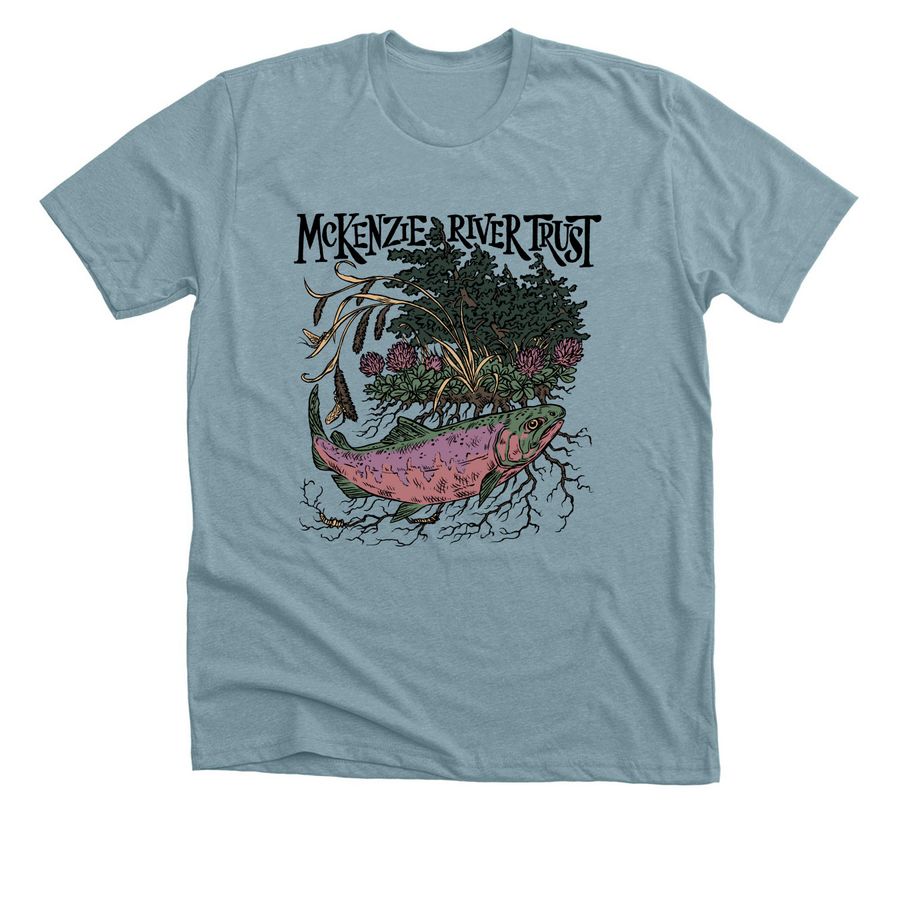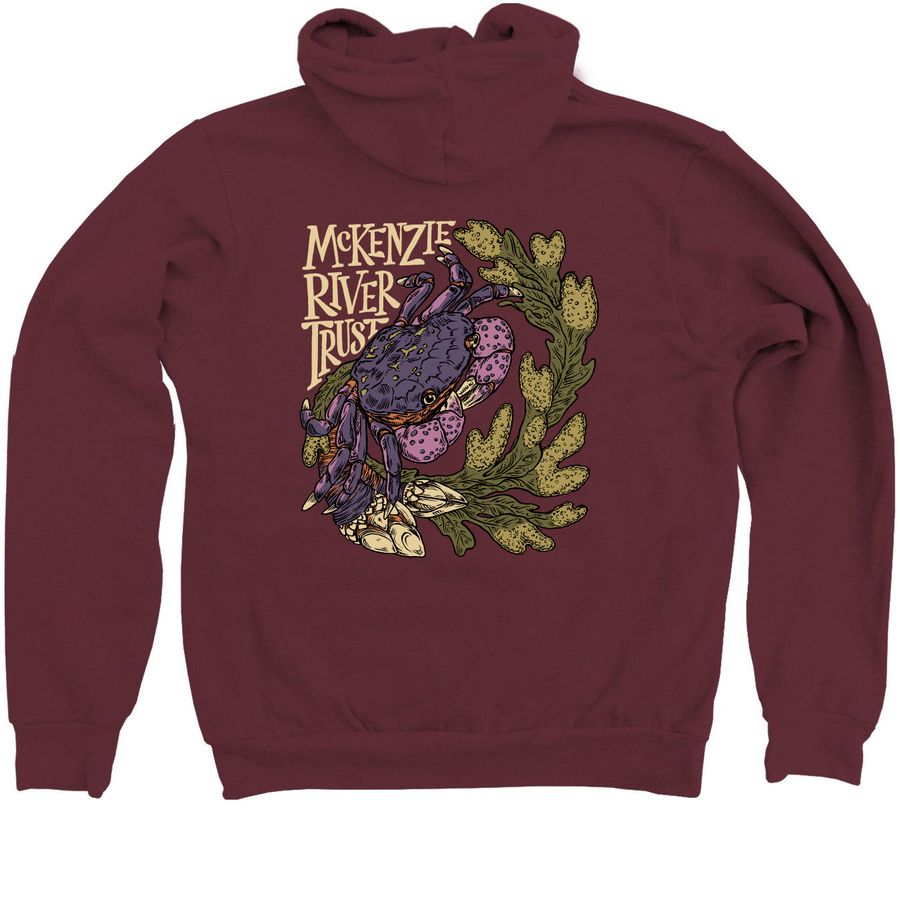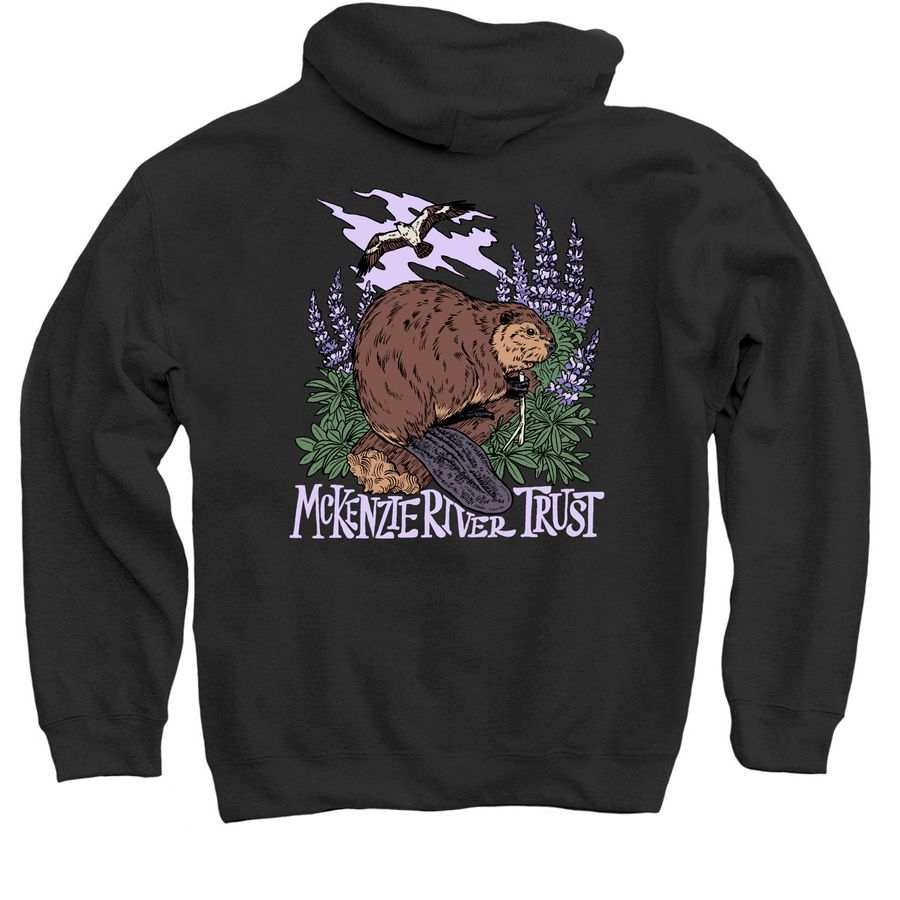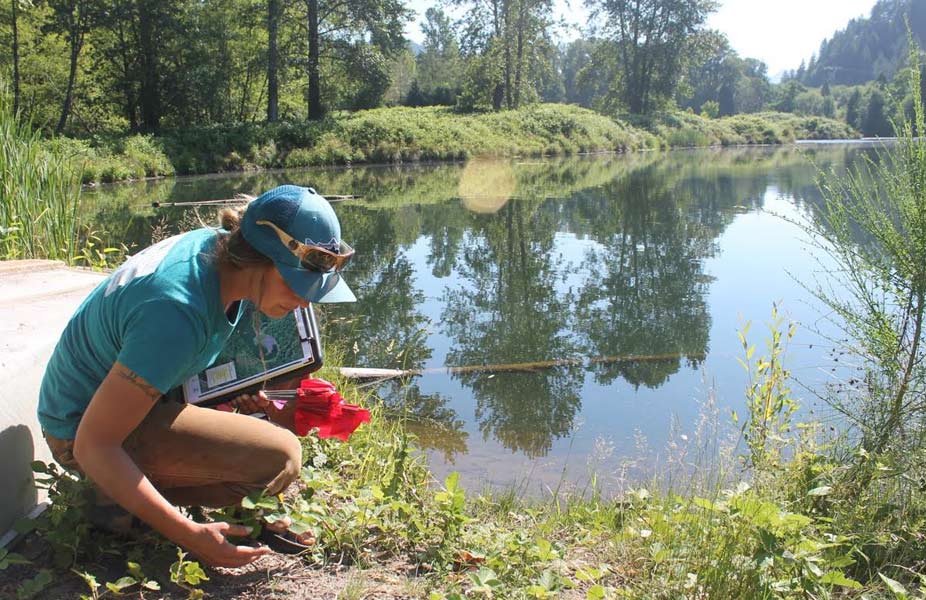
Volunteer coordinator Elizabeth Goward looks for signs of turtle nests at Finn Rock Reach.
Before you can even see them, the turtles know you’re there. As you walk towards the ponds, you hear soft plops and see rings in the water. Western pond and western painted turtles escape quickly into the water from their sunbathing perches. Once they realize you are not a predator, they cautiously stick their heads out of the water and slowly climb back onto the logs and rocks that dot the surface of the ponds at Finn Rock Reach.
During the warm months, these native Oregon species spend their days basking on logs, rocks, and even floating plants. As spring turns into summer, adult female turtles begin to lay their eggs in nests in the ground. They cover them with dirt, and the eggs are warmed by the summer sun. With luck, by the time the salmon return to their spawning grounds in nearby Elk Creek, a few of the new crop of hatchlings will crawl out and slip quietly into the ponds with their parents. The rest will emerge the following spring.
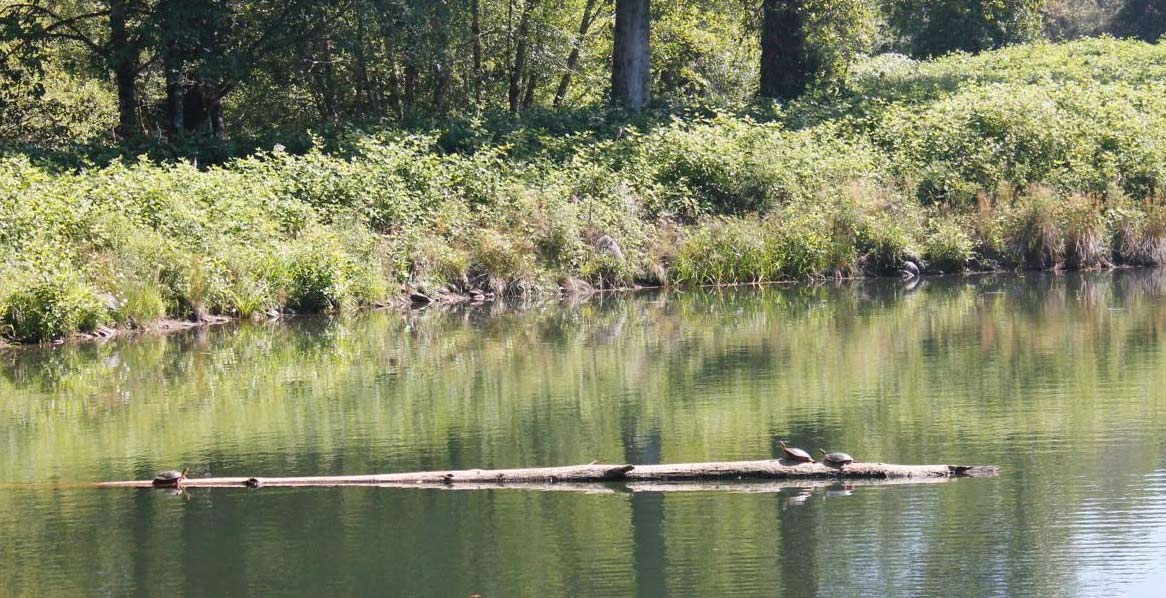
Western Pond and Western Painted Turtles bask at Finn Rock Reach near the McKenzie River.
Home Waters for Rare Turtles
Both of the turtle species found at Finn Rock Reach are rare in the Willamette Valley. Luckily, this area contains some of the most diverse habitat of the upper McKenzie River. In addition to providing a home for western pond and western painted turtles, Finn Rock is home to Chinook salmon and other native fishes including stickleback; elk; beaver; otter; mink; a wide variety of dragonflies, damselflies, and butterflies; and more.
Turtles need specific characteristics in their habitat, both in water and on land. Western pond turtles are usually found in ponds, lakes, reservoirs, and rivers. Western painted turtles prefer slow moving, shallow water, like streams, canals, sloughs, and ponds. Both nest on land, typically close to the water. The ponds at Finn Rock have a very stable water level, which makes it easy for turtles to find nesting sites that will stay dry during the winter.

To research turtles at the ponds, we look for dug up nests (the scientific term is depredated) like this one.
One of our goals is to make Finn Rock Reach the best possible habitat for all species. The 278-acre property was purchased by McKenzie River Trust in 2015/16 and includes 2 miles of river frontage. The former landowner, Rosboro timber company, built the ponds so that they could gather gravel to construct roads across their network of lands in the McKenzie basin. Nobody suspected that these man-made ponds would attract such sensitive turtle species.
Learning More, Day by Day
To find out how our turtles are using the area, our stewardship interns are making regular visits to the ponds. They’re observing how the turtles are currently using the ponds by watching basking behaviors, taking count of each species, and mapping their nests. The information gathered from this research will help inform our management plan for the property.
The next step is restoration to help improve the habitat. Restoration will likely include re-grading the banks of the ponds and planting them with natural vegetation to improve nesting and rearing areas. It will also likely include making the area less conducive to invasive species, and creating better basking spots.
Balancing Needs for Turtles and Salmon
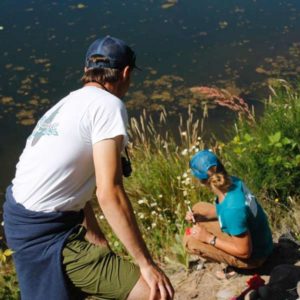
Stewardship intern Peter Cooper and volunteer coordinator Elizabeth Goward look for signs of turtles in the ponds. Learning more about the turtles will help us plan for restoration at Finn Rock Reach.
Before the ponds were created, this area was a natural floodplain. During the winter and larger flood events, the river would expand on to the floodplain, creating lots of side channels. These slow moving waters are the perfect habitat for young salmon, which aren’t yet strong enough to take on the fast flowing river. Today, though, the high, steep edges of the ponds prevent the river from making these connections and creating side channels.
The challenge we now face is how to restore floodplain habitat for juvenile salmon, while still keeping the ponds and dry nesting habitat for our native turtle species. One possibility is to turn part of the pond area back into floodplain, while keeping a section as ponds for turtle habitat. Fortunately, turtles are smart creatures, and they will be able to utilize the remaining nesting areas.
What You Can Do
It’s important to protect these habitats as our population expands and demands on the McKenzie River grow.
At McKenzie River Trust, we are working hard to do our part to help make Finn Rock an even better habitat for native species. In April, we launched the McKenzie Homewaters Campaign, a $6 million community effort to protect, restore, and care for Finn Rock Reach, and to expand our conservation footprint up and downstream. To date, over 200 people like you have contributed, bringing us to more than 2/3 of our goal.
If you’re interested in seeing the turtles and exploring Finn Rock Reach, please join us on one of our tours and let us know that you want to learn more. We would be happy to sit down or walk the land with you to introduce you to the projects at Finn Rock and elsewhere in the watershed.
Join us for an upcoming tour
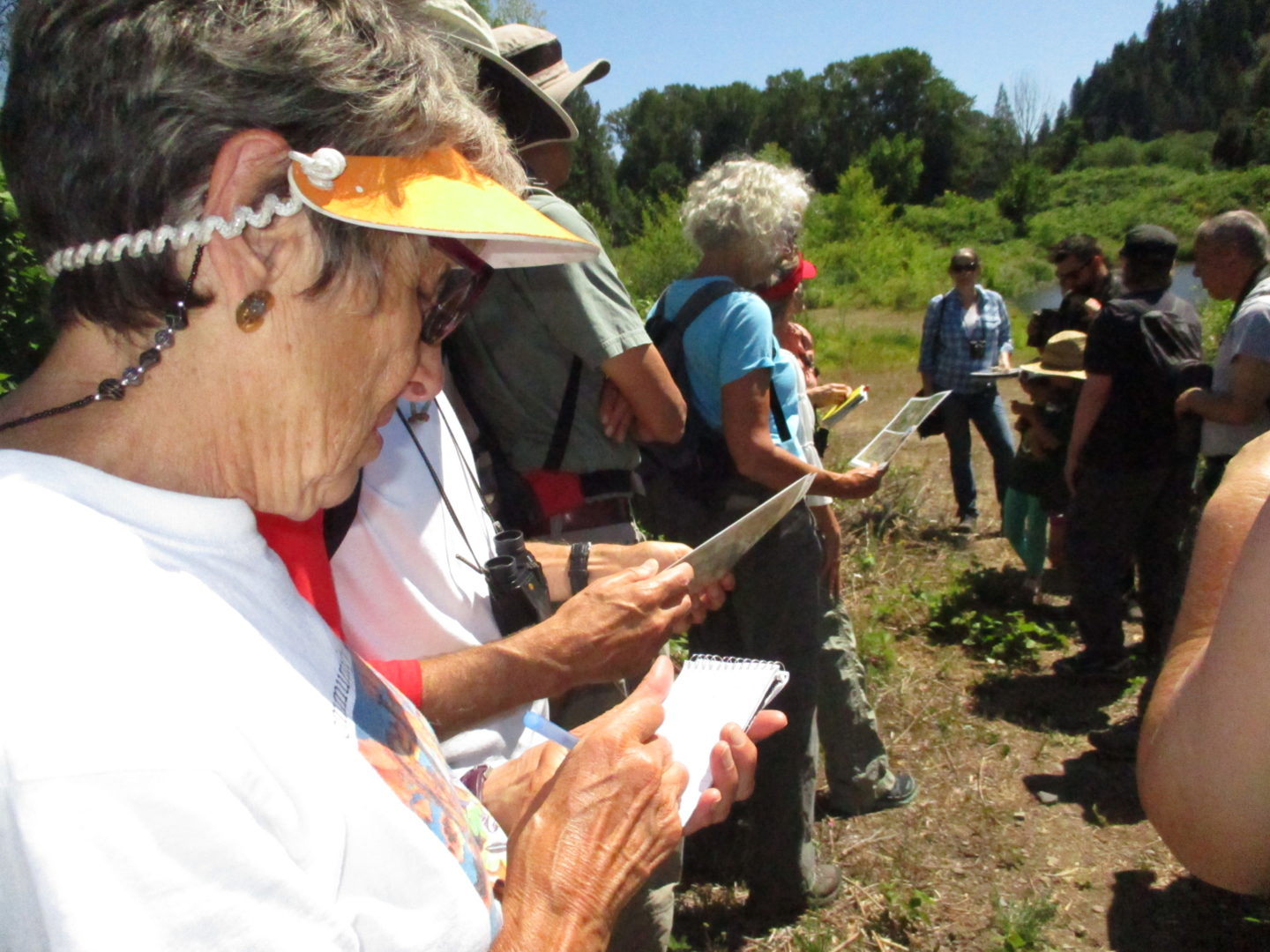
A visitor takes notes during a recent tour of Finn Rock Reach. Photo by Holly McRae.
About the author
Harper Johnson is an outreach intern with McKenzie River Trust. Harper is a junior at Williams College in Massachusetts, double majoring in Psychology and Economics. She grew up in Eugene and spent many summers enjoying the McKenzie River and other wild areas throughout Oregon. She most recently did research on the Colorado River Delta as an intern at an organization dedicated to protecting special places in Baja California and is excited for the opportunity to work at a similar organization in her hometown. She is interested in outreach and communications and is excited to have the chance to explore this at a land trust and gain valuable experience throughout the summer.

